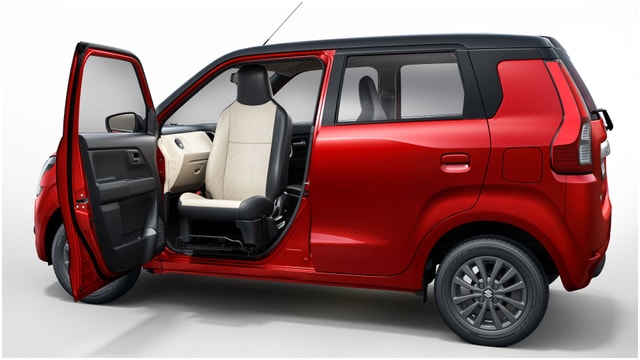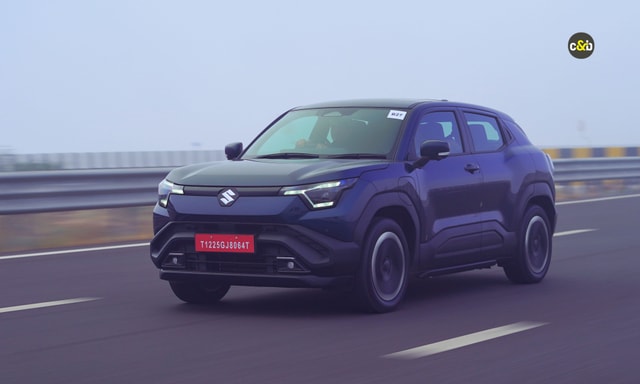FIA Confirms 2026 Engine Formula With Sustainability In Mind

The FIA and F1 have now finally confirmed the new engine regulations which will start from the 2026 season. The confirmation of these regulations has been deemed to be critical as the Volkswagen group has predicated the entry of the Audi and Porsche brands in F1 on the basis of their viability. F1 and the FIA for their part have tuned these regulations in a way to attract the storied German automakers into the sport while improving the costs, the viability of the technology for road cars, sustainability and overall impact of the powertrains on the show.
Long story short, starting from 2026, the F1 cars will use significantly less energy and produce net zero CO2 emissions. How is this happening well, here are the details?
No new fossil carbon will be burned: F1 power units will use a new fully sustainable fuel which is synthetic in nature. F1 is doing research and testing with ARAMCO and the end result will be that no new fossil carbon will be burned, but instead, carbon will be derived either from non-food sources, municipal waste or even out of the atmosphere.
Electrical Energy will be tripled: Already, the F1 power units use a combination of a traditional internal combustion engine which is the most efficient one on the planet with an electrical element. Now F1 will further evolve the current 1.6 litres V6 turbocharged internal combustion engine and will marry it with a 350 kW electrical component called the MGU-K (Kinetic Motor Generator Unit) which is almost a 3x increase from the 120 kW unit on the current cars. This will also result in more braking energy.
Same Amount Of Power, Less Fuel: Now, the current generation of cars deploy upwards of 850bhp and the aim of the new regulations is to have performance parity, perhaps a little more with the cars having 1,000 bhp of power on tap. But these figures are rather stagnant from when the turbo hybrid era of F1 engines was first introduced in 2013. F1 is gunning for incredible efficiency. In 2013, the engines needed 160 kg of fuel but that number was brought down to 100 kg by 2020. The cars have also been gaining weight so this was also a reason for the reduction. Now for 2026, F1 aims to reduce the amount of fuel to 70 kg during the Grand Prix. F1 is also looking to move away from controlling the fuel flow pressure through mass flow rate to maximum energy flow rate. This is something many believe Ferrari was caught gaming in 2019 which resulted in its engine woes in 2020 and 2021.
Safety First: The MGU-K now will be enclosed within the chassis next to the battery and the control electronics which means all the high voltage equip the net will be contained within a daffy cell which will make these cars safer than they already are. This is also important as the electrical output of the new cars will be almost three times more. F1 is also committed to recycling as the options for the recycling of batteries have been mandated and at the end of the MGU-K’s life, materials like cobalt will be recycled.
Lower Costs For Manufacturers: One of the elements of the current engines that have caused the costs to go out of proportion is the development of the complex MGU-H (Motor Generator Unit- Heat). It is a technology that Mercedes, Ferrari, Honda and Renault have been working on for now for over a decade and millions have been spent on them. But this technology doesn’t translate to road cars.
Now with the entry of Audi and Porsche in mind and the creation of Red Bull powertrains, the MGU-H has been disbanded. Apart from this, some components have been standardised to bring costs down and avoid duplication of development. Dyno hours have also been constrained but engineers can still use CFD methods to develop as these technologies keep getting enhancements year on year with the help of increased computational power of data centres.
More Challenge For Drivers: The MGU-H eliminated the turbo lag from the hybrid engines and it is believed turbo lag could return which could make the cars harder to control on corner exits. This will mean more variety in strategy and more challenges for the drivers as they will need to decide when to attack or sit back.
Trending News
 1 min readYamaha YZF-R2 Name Trademarked In India
1 min readYamaha YZF-R2 Name Trademarked In India 1 min readTriumph Tracker 400: In Pictures
1 min readTriumph Tracker 400: In Pictures
Latest News
 car&bike Team | Dec 19, 2025Next-gen Audi Q3 Spied In India Ahead Of Launch In 2026Third-gen Q3 made its global debut in mid-2025, getting notable tech upgrades and electrified powertrain options.2 mins read
car&bike Team | Dec 19, 2025Next-gen Audi Q3 Spied In India Ahead Of Launch In 2026Third-gen Q3 made its global debut in mid-2025, getting notable tech upgrades and electrified powertrain options.2 mins read car&bike Team | Dec 19, 2025Yamaha YZF-R2 Name Trademarked In IndiaThe Yamaha R15, one of Yamaha India’s most popular motorcycle models, is likely to continue, even when the R2 finally makes it debut.1 min read
car&bike Team | Dec 19, 2025Yamaha YZF-R2 Name Trademarked In IndiaThe Yamaha R15, one of Yamaha India’s most popular motorcycle models, is likely to continue, even when the R2 finally makes it debut.1 min read car&bike Team | Dec 18, 2025KTM 160 Duke With TFT Dash launched At Rs 1.79 LakhThe 5-inch colour TFT dash is borrowed from the 390 Duke and is shared across the brand’s sub-400cc lineup.2 mins read
car&bike Team | Dec 18, 2025KTM 160 Duke With TFT Dash launched At Rs 1.79 LakhThe 5-inch colour TFT dash is borrowed from the 390 Duke and is shared across the brand’s sub-400cc lineup.2 mins read car&bike Team | Dec 18, 2025Lamborghini Urus Seized By Cops Following Viral Clip Of Speeding On Bandra-Worli Sea LinkThe car was seized after a video of it allegedly overspeeding on the Bandra–Worli Sea Link, where the speed limit is capped at 80 kmph, went viral.2 mins read
car&bike Team | Dec 18, 2025Lamborghini Urus Seized By Cops Following Viral Clip Of Speeding On Bandra-Worli Sea LinkThe car was seized after a video of it allegedly overspeeding on the Bandra–Worli Sea Link, where the speed limit is capped at 80 kmph, went viral.2 mins read car&bike Team | Dec 18, 20252025 Ducati XDiavel V4 India Launch Details RevealedThe new Ducati XDiavel V4 will be launched towards the end of December 2025 and will sit alongside the standard Ducati Diavel V4.3 mins read
car&bike Team | Dec 18, 20252025 Ducati XDiavel V4 India Launch Details RevealedThe new Ducati XDiavel V4 will be launched towards the end of December 2025 and will sit alongside the standard Ducati Diavel V4.3 mins read Amaan Ahmed | Dec 18, 2025Maruti WagonR Swivel Front Seat Kit Launched: Check Price, AvailabilityBangalore-based startup TrueAssist Technology Private Limited has developed a mechanism that allows the front passenger seat to swivel outwards, in a bid to improve accessibility for the aged and persons with disabilities.2 mins read
Amaan Ahmed | Dec 18, 2025Maruti WagonR Swivel Front Seat Kit Launched: Check Price, AvailabilityBangalore-based startup TrueAssist Technology Private Limited has developed a mechanism that allows the front passenger seat to swivel outwards, in a bid to improve accessibility for the aged and persons with disabilities.2 mins read
 Bilal Firfiray | Dec 19, 2025Maruti Suzuki e-Vitara Review: Worth The Wait?After a long wait, the first-ever electric Maruti Suzuki is here. It’s the e-Vitara, and it comes with a few promises. But arriving this late, is it worth the wait? Or is it a case of too little, too late?9 mins read
Bilal Firfiray | Dec 19, 2025Maruti Suzuki e-Vitara Review: Worth The Wait?After a long wait, the first-ever electric Maruti Suzuki is here. It’s the e-Vitara, and it comes with a few promises. But arriving this late, is it worth the wait? Or is it a case of too little, too late?9 mins read Bilal Firfiray | Dec 18, 2025Mercedes-Benz G450d: The Subtle Power of EvolutionThe Mercedes-Benz G 450d evolves subtly with more power, improved efficiency, and modern tech, while staying true to the timeless G-Class design. And character.4 mins read
Bilal Firfiray | Dec 18, 2025Mercedes-Benz G450d: The Subtle Power of EvolutionThe Mercedes-Benz G 450d evolves subtly with more power, improved efficiency, and modern tech, while staying true to the timeless G-Class design. And character.4 mins read Janak Sorap | Dec 11, 2025Harley-Davidson X440 T First Ride Review: Smarter and SharperHarley-Davidson has taken the X440 and given it a more focused and engaging twist. The result is the X440 T—essentially the same platform but updated in areas that give the motorcycle more appeal and riders more thrill.5 mins read
Janak Sorap | Dec 11, 2025Harley-Davidson X440 T First Ride Review: Smarter and SharperHarley-Davidson has taken the X440 and given it a more focused and engaging twist. The result is the X440 T—essentially the same platform but updated in areas that give the motorcycle more appeal and riders more thrill.5 mins read Shams Raza Naqvi | Dec 10, 20252025 Mini Cooper Convertible Review: More Colour On Indian RoadsThe updated Mini Cooper Convertible is set to be launched in the Indian market in the next few days. We drive it around Jaisalmer for a quick review.5 mins read
Shams Raza Naqvi | Dec 10, 20252025 Mini Cooper Convertible Review: More Colour On Indian RoadsThe updated Mini Cooper Convertible is set to be launched in the Indian market in the next few days. We drive it around Jaisalmer for a quick review.5 mins read Bilal Firfiray | Dec 8, 2025Tata Sierra Review: India’s New Favourite?Marking its return after a few decades, the reborn Sierra has made everyone sit up and take notice. But is it worth the hype?10 mins read
Bilal Firfiray | Dec 8, 2025Tata Sierra Review: India’s New Favourite?Marking its return after a few decades, the reborn Sierra has made everyone sit up and take notice. But is it worth the hype?10 mins read


























































































































